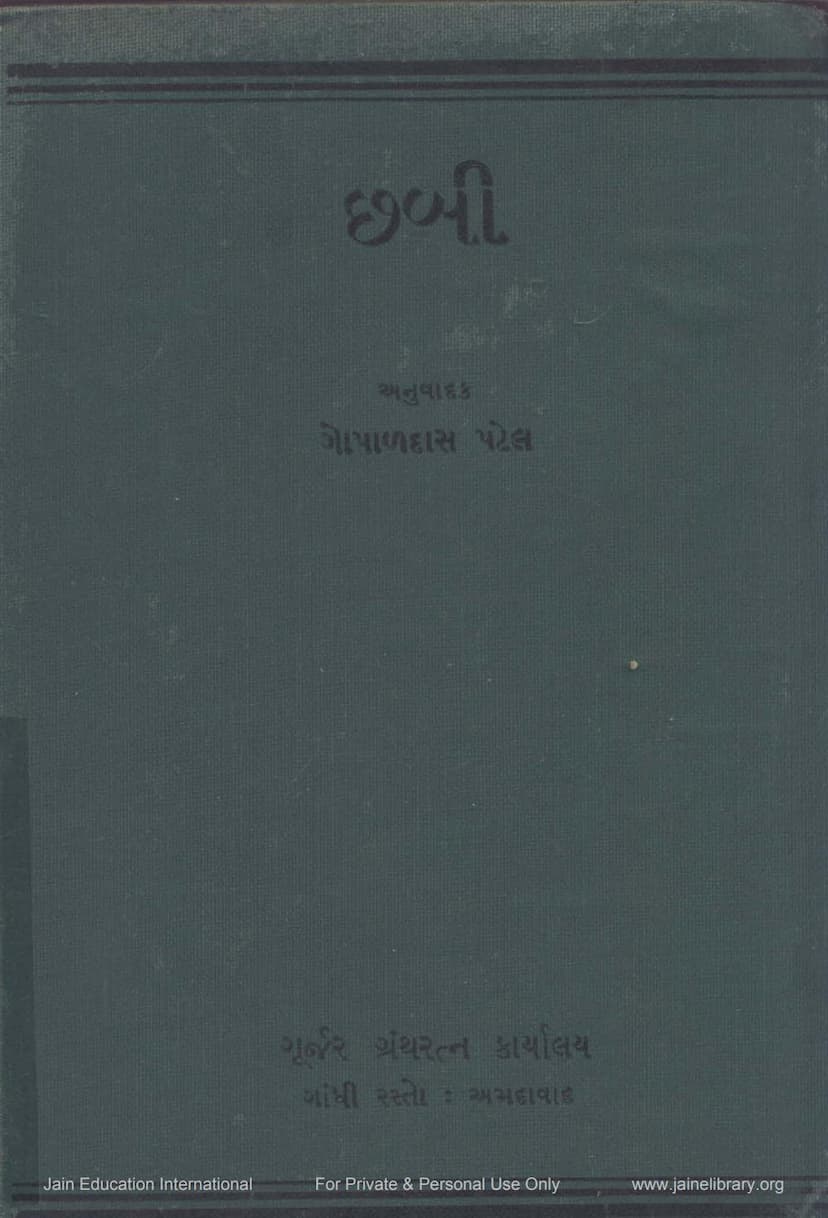Chabi
Added to library: September 1, 2025

Summary
The book "Chabi" (છબી) by Gopaldas Jivabhai Patel, published by Gurjar Granthratna Karyalay in Ahmedabad in 1947, is a collection of short stories, including the titular "Chabi" and "Harilaxmi." The preface, written by R.V. Pathak, highlights Sarat Chandra Chattopadhyay as a master of both long and short stories. The collection features six of his short stories, translated into Gujarati.
The stories largely depict rural Bengali society and its issues, with a critical lens.
-
"Chabi" (The Image): This is a story about young lovers, Ba-thin and Ma-she. It explores the complexities of love, highlighting how even with deep affection, misunderstandings can arise due to differing perspectives on life and duty. Ba-thin, an artist, is dedicated to his father's legacy and vows to repay his debt through his art. Ma-she, though in love, struggles with Ba-thin's artistic devotion, which she perceives as neglect of their relationship. The story delves into the emotional turmoil and the eventual reconciliation that comes from understanding and love.
-
"Vilasi" (The Luxurious One): This story, considered semi-fictional, critiques rural societal norms. It presents a scenario where a Brahmin marries a Gaudini's daughter, depicting the societal consequences of such a union. The narrative is infused with Sarat Chandra's characteristic satire and sharp criticism of society.
-
"Mukaddama nu Phal" (The Fruit of the Lawsuit): This story emphasizes the positive aspect of motherhood found even in a fallen rural society. The protagonist, like Narayan in "Ram ni Sumati," shows maternal affection towards an unrelated child. Despite the family's animosity towards the child, the woman's maternal love ultimately triumphs, resolving familial discord. The story reflects Sarat Chandra's deep faith in the power of a mother's love.
-
"Mahesh": This story reflects Sarat Chandra's observations of rural society, where a Muslim character's deep devotion to his bull, Mahesh, contrasts with the indifference of a Hindu landlord. The story highlights religious and social disparities.
-
"Abhagi nu Swarg" (The Unfortunate's Heaven): This story indirectly portrays the heartlessness of Bengal's landlord class, along with the tragic tales of the rich-poor divide and blind faith.
-
"Harilaxmi": This story vividly illustrates the envy, pettiness, falsehood, artistic inclinations, arrogance, and pride of Bengal's landlords. Harilaxmi's character is skillfully portrayed as someone whose pride is easily wounded. Her envy of her intelligent yet poorer sister-in-law, Mazali-vahu, leads to unfortunate consequences. Despite her initial actions, Harilaxmi eventually realizes her mistake and her true feelings of love and remorse.
The preface concludes by praising Sarat Chandra's enduring creativity and ability to consistently present fresh characters and human emotions. Despite his critiques of rural society, his writing stems from a place of empathy and a desire for justice. The collection is deemed a valuable service to Gujarati literature through its translation.